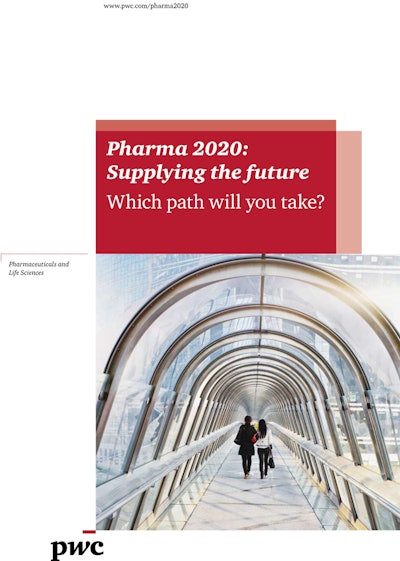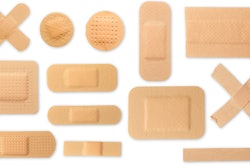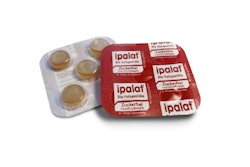
“Supplying the Future: Which path will you take?” is the latest report in the Pharma 2020 series from PwC US.
The report outlines six trends that will fundamentally change the way pharmaceutical companies make and distribute products:
1. Health reform shifts emphasis from product features to patient outcomes. The government's emphasis on health outcomes as a basis for payments will require pharmaceutical companies to not only manage the manufacturing and distribution of medicines and companion diagnostics, but also to combine product offerings with data and supplemental services that add value through improved outcomes and efficiencies.
2. New products types. The growth of biologics, bioengineered vaccines and advancements such as stem cell research and nanotechnology are diversifying pharma's portfolio with products that have a shorter shelf life and require more complex manufacturing and distribution processes than shelf-stable pills and conventional medicines.
3. Incremental product launch alters the sales curve. Both the U.S. Food and Drug Administration (FDA) and the European Medicines Agency (EMA) have shown interest in limited label approvals, granting “live licenses” contingent on ongoing testing versus the all-or-nothing phase I through IV approach.
Current processes support revenue projections for “big bang” product launches, with peak sales upfront. Pharmaceutical companies will need more adaptable cost structures that preserve gross margins at each stage of the product lifecycle.
4. New modes of healthcare delivery. Greater use of electronic health records, e-prescribing, mobile health applications, and remote monitoring are moving healthcare delivery, including medication management, beyond hospitals and physicians offices into homes, communities, and direct to patients.
Pharmaceutical companies will need real-time information to manage wider distribution networks and demand-driven manufacturing and distribution processes.
5. Growing importance of emerging markets. The growing importance of the emerging markets will require pharmaceutical companies to understand patient needs and preferences in the developing world, and modify cost and design of product offerings and services accordingly.
6. Greater public scrutiny. Globalization, the foreign sourcing and manufacture of regulated products, and an increase in the volume and complexity of imported products have increased the need for supply chain control to identify the risk of contamination and fake medicines.
Regulators are raising the bar on supply chain safety, demanding sophisticated technology solutions to track and trace product throughout the supply chain.
“The current pharmaceutical supply chain worked well when the 'blockbuster' paradigm prevailed, but pharma's focus in a post-health reform world is shifting from products to patients, and their supply chain processes need to adopt the speed and agility of other, more consumer-oriented industries such as consumer electronics and mass retailing,” said Wynn Bailey, head of supply chain strategies, PwC. “In a world where outcomes count for everything, health organizations need to acquire a much deeper understanding of patients and their healthcare needs. Information is the new currency, and the data behind the product may soon be as valuable as the product itself.”
PwC predicts that the pharmaceutical supply chain will undergo three key changes over the next decade:
• It will become fragmented, with different models for different product types and patient segments.
• It will become a means of market differentiation and source of economic value.
• It will become a two-way street, with information flowing upstream to drive the downstream flow of products and services, and the management of information transferred between the pharmaceutical company, the patient, and healthcare provider will become as important as the movement of product.
“The most successful pharma companies will be those that recognize the underlying value locked in their supply chain and can leverage it as a value and brand differentiator rather than just a cost,” said Steve Arlington, global advisory pharmaceutical and life sciences leader, PwC. “Companies that recognize information is the currency of the future, will be those that go the final mile and stand out by 2020.”
The report outlines six trends that will fundamentally change the way pharmaceutical companies make and distribute products:
1. Health reform shifts emphasis from product features to patient outcomes. The government's emphasis on health outcomes as a basis for payments will require pharmaceutical companies to not only manage the manufacturing and distribution of medicines and companion diagnostics, but also to combine product offerings with data and supplemental services that add value through improved outcomes and efficiencies.
2. New products types. The growth of biologics, bioengineered vaccines and advancements such as stem cell research and nanotechnology are diversifying pharma's portfolio with products that have a shorter shelf life and require more complex manufacturing and distribution processes than shelf-stable pills and conventional medicines.
3. Incremental product launch alters the sales curve. Both the U.S. Food and Drug Administration (FDA) and the European Medicines Agency (EMA) have shown interest in limited label approvals, granting “live licenses” contingent on ongoing testing versus the all-or-nothing phase I through IV approach.
Current processes support revenue projections for “big bang” product launches, with peak sales upfront. Pharmaceutical companies will need more adaptable cost structures that preserve gross margins at each stage of the product lifecycle.
4. New modes of healthcare delivery. Greater use of electronic health records, e-prescribing, mobile health applications, and remote monitoring are moving healthcare delivery, including medication management, beyond hospitals and physicians offices into homes, communities, and direct to patients.
Pharmaceutical companies will need real-time information to manage wider distribution networks and demand-driven manufacturing and distribution processes.
5. Growing importance of emerging markets. The growing importance of the emerging markets will require pharmaceutical companies to understand patient needs and preferences in the developing world, and modify cost and design of product offerings and services accordingly.
6. Greater public scrutiny. Globalization, the foreign sourcing and manufacture of regulated products, and an increase in the volume and complexity of imported products have increased the need for supply chain control to identify the risk of contamination and fake medicines.
Regulators are raising the bar on supply chain safety, demanding sophisticated technology solutions to track and trace product throughout the supply chain.
“The current pharmaceutical supply chain worked well when the 'blockbuster' paradigm prevailed, but pharma's focus in a post-health reform world is shifting from products to patients, and their supply chain processes need to adopt the speed and agility of other, more consumer-oriented industries such as consumer electronics and mass retailing,” said Wynn Bailey, head of supply chain strategies, PwC. “In a world where outcomes count for everything, health organizations need to acquire a much deeper understanding of patients and their healthcare needs. Information is the new currency, and the data behind the product may soon be as valuable as the product itself.”
PwC predicts that the pharmaceutical supply chain will undergo three key changes over the next decade:
• It will become fragmented, with different models for different product types and patient segments.
• It will become a means of market differentiation and source of economic value.
• It will become a two-way street, with information flowing upstream to drive the downstream flow of products and services, and the management of information transferred between the pharmaceutical company, the patient, and healthcare provider will become as important as the movement of product.
“The most successful pharma companies will be those that recognize the underlying value locked in their supply chain and can leverage it as a value and brand differentiator rather than just a cost,” said Steve Arlington, global advisory pharmaceutical and life sciences leader, PwC. “Companies that recognize information is the currency of the future, will be those that go the final mile and stand out by 2020.”



















